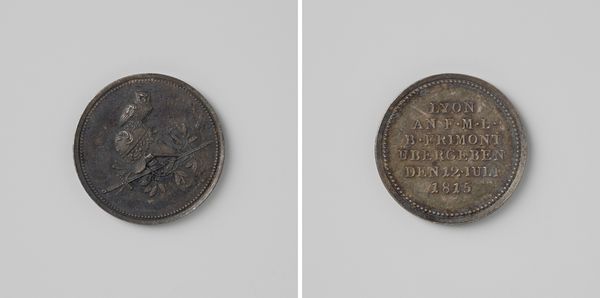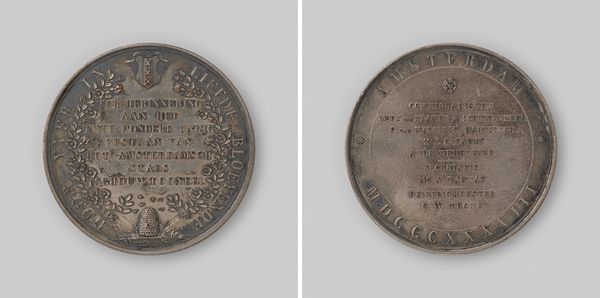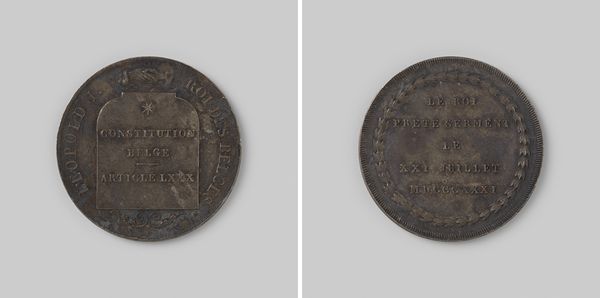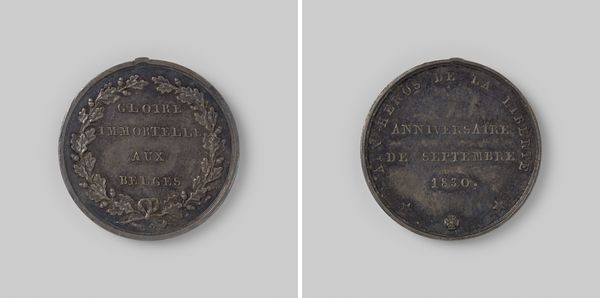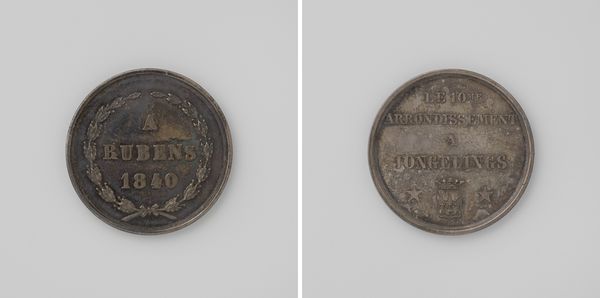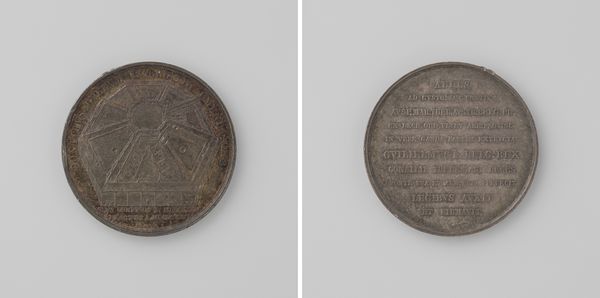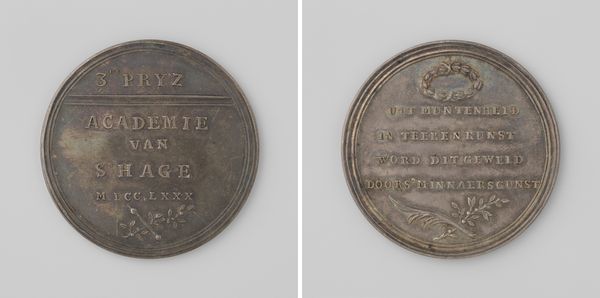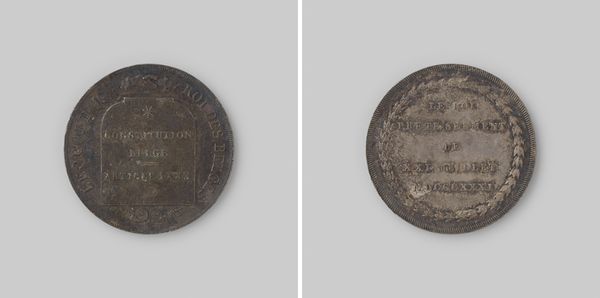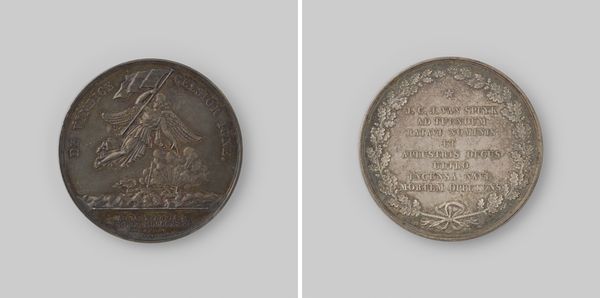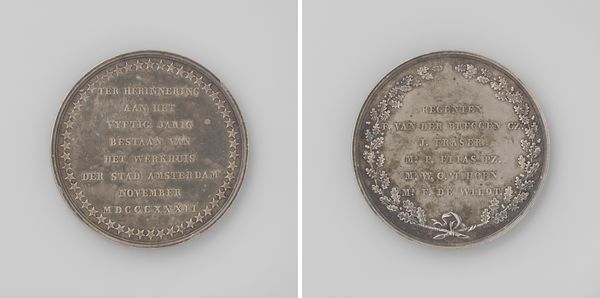
bronze, sculpture
#
neoclacissism
#
bronze
#
sculpture
#
history-painting
Dimensions: diameter 3.5 cm, weight 21.28 gr
Copyright: Rijks Museum: Open Domain
Barend Christiaan van Calker created this coin to commemorate the first National Assembly in The Hague in 1796. This assembly marked a pivotal moment of transition, the old order giving way to new ideals of popular sovereignty. This coin then is not just currency; it's a symbol of shifting power dynamics, encapsulating the zeitgeist of revolutionary fervor that swept through Europe during the late 18th century. The inscriptions on the coin, "Majestas Populi" and "Primos A Condita Republica Conventus Populi Batavi," translate to "The Majesty of the People" and "The First Assembly of the Batavian People," respectively. These phrases encapsulate the core sentiment driving the revolution: a belief in the inherent authority and rights of the populace. The coin serves as a tangible reminder of the struggles and aspirations of a generation seeking to redefine the social contract. It reflects the emotional weight of a society in transition, grappling with questions of identity, representation, and the very nature of governance. It invites us to consider how power is negotiated, contested, and ultimately, enshrined in our collective memory.
Comments
No comments
Be the first to comment and join the conversation on the ultimate creative platform.
